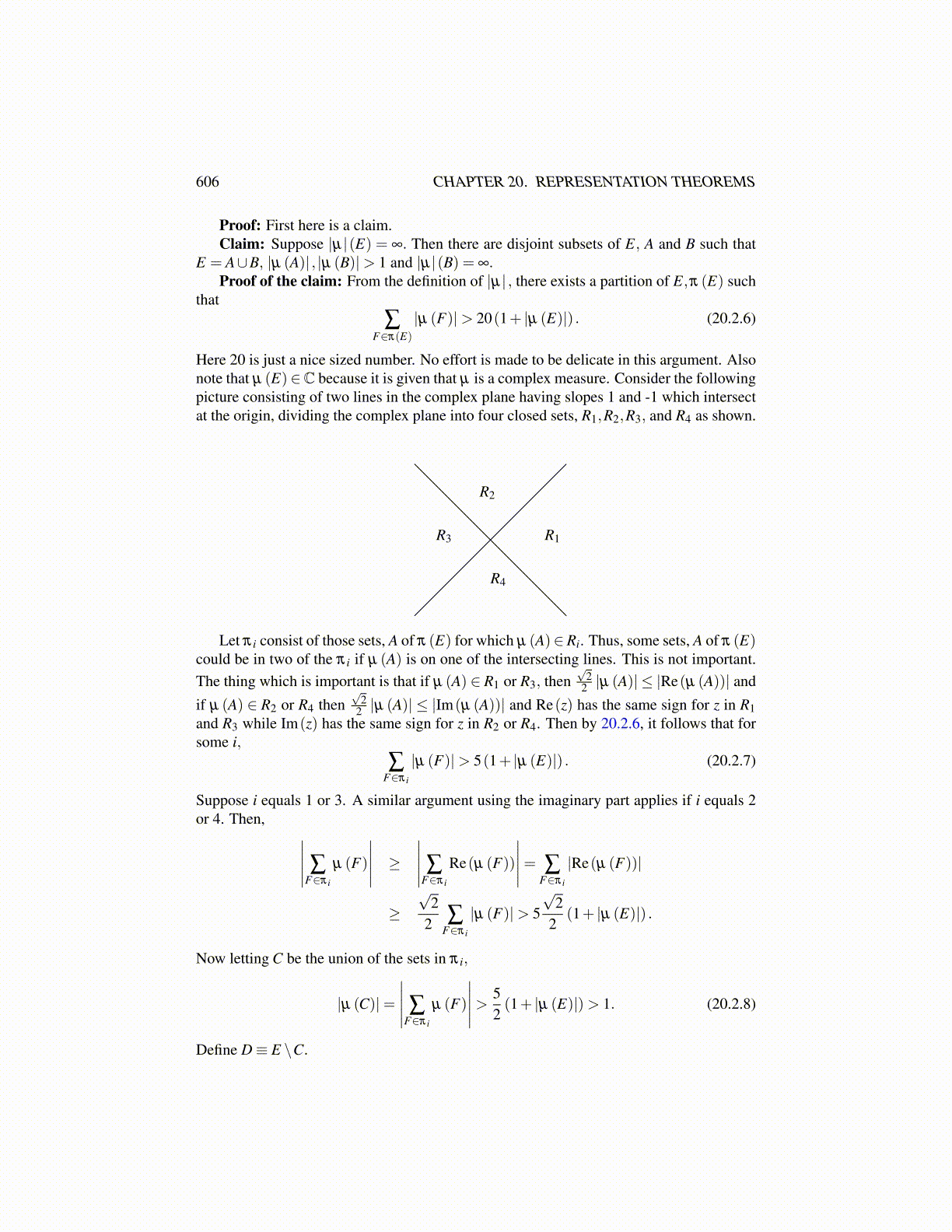
606 CHAPTER 20. REPRESENTATION THEOREMS
Proof: First here is a claim.Claim: Suppose |µ|(E) = ∞. Then there are disjoint subsets of E, A and B such that
E = A∪B, |µ (A)| , |µ (B)|> 1 and |µ|(B) = ∞.Proof of the claim: From the definition of |µ| , there exists a partition of E,π (E) such
that∑
F∈π(E)|µ (F)|> 20(1+ |µ (E)|) . (20.2.6)
Here 20 is just a nice sized number. No effort is made to be delicate in this argument. Alsonote that µ (E)∈C because it is given that µ is a complex measure. Consider the followingpicture consisting of two lines in the complex plane having slopes 1 and -1 which intersectat the origin, dividing the complex plane into four closed sets, R1,R2,R3, and R4 as shown.
R1
R2
R3
R4
Let π i consist of those sets, A of π (E) for which µ (A)∈Ri. Thus, some sets, A of π (E)could be in two of the π i if µ (A) is on one of the intersecting lines. This is not important.The thing which is important is that if µ (A) ∈ R1 or R3, then
√2
2 |µ (A)| ≤ |Re(µ (A))| and
if µ (A) ∈ R2 or R4 then√
22 |µ (A)| ≤ |Im(µ (A))| and Re(z) has the same sign for z in R1
and R3 while Im(z) has the same sign for z in R2 or R4. Then by 20.2.6, it follows that forsome i,
∑F∈π i
|µ (F)|> 5(1+ |µ (E)|) . (20.2.7)
Suppose i equals 1 or 3. A similar argument using the imaginary part applies if i equals 2or 4. Then, ∣∣∣∣∣ ∑
F∈π i
µ (F)
∣∣∣∣∣ ≥∣∣∣∣∣ ∑F∈π i
Re(µ (F))
∣∣∣∣∣= ∑F∈π i
|Re(µ (F))|
≥√
22 ∑
F∈π i
|µ (F)|> 5
√2
2(1+ |µ (E)|) .
Now letting C be the union of the sets in π i,
|µ (C)|=
∣∣∣∣∣ ∑F∈π i
µ (F)
∣∣∣∣∣> 52(1+ |µ (E)|)> 1. (20.2.8)
Define D≡ E \C.